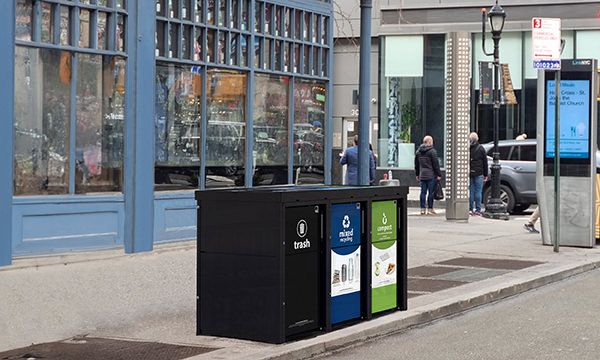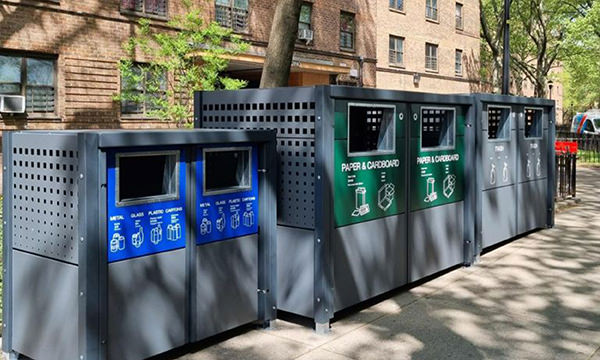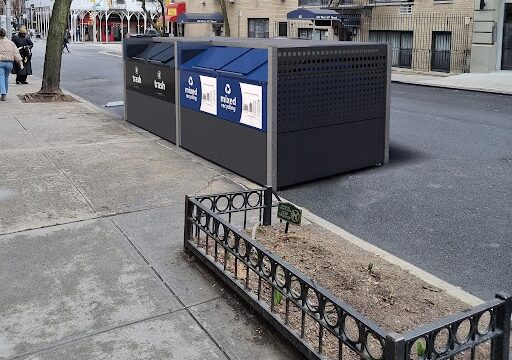

Making Recycling Collection Stations More Accessible for Local Communities
Convenient and accessible recycling collection stations within local communities play an integral role in developing zero-waste recycling infrastructure and provide essential patterns of sustainability that help restrict natural resource depletion.

Across the United States, public awareness about recycling infrastructure and landfill diversion has grown considerably in recent years. The significant impact of poor waste management and landfill accumulation in relation to urban greenhouse gas emissions is developing as a national concern.
As many regions adopt approaches to enhance recycling practices amongst their local communities, what has been brought to light is the lack of convenient and consistent access for households across the nation. A research study conducted back in 2017 estimated that 34 million single-family homes in the US didn’t have access to some form of convenient recycling. Of the 1000 cities involved in the study, that is around one-third of households.
For local communities, accessibility and convenience are often the primary concerns when seeking to promote recycling programs and afford growth for collection stations. By administering distinct guidelines and methods with practical observation and an efficient approach to developmental practice, local communities can benefit from increased engagement in recycling collection stations, attributing positively to a region’s waste diversion targets and recycling rate targets.
In order to determine where a current recycling collection program can improve, it is a worthwhile practice to look at the standards set by other recycling programs across the nation and identify key areas that contributed to their success. Once the comparative limitations are understood, appropriate changes and improvements can then be developed and implemented.

Undertaking a comprehensive study to understand and identify the waste produced in a local community will help to determine the impact of recycling contamination and inform recycling priorities. Determining which waste streams are the most significant alongside which materials are least commonly recycled can help establish focus areas and support the development of a collection process for each specific stream.
Carried out with a coordinated approach across all levels, these combined methods and the subsequent findings they produce can be utilized to make recycling collection stations more efficient and accessible for users, while improving recycling rates among the local community.
Alongside the active participation of residents in the local community, efforts to achieve buy-in from all those concerned should be regarded as a requisite for making recycling collection stations more accessible, and can be achieved by first identifying the respective parties involved in the overall system. This will often include a mix of collection workers, waste management operators at a processing center, local governments and community organizations.

Engaging a consistent form of communication across all parties helps to achieve collaborative efforts and should provide insight into where sources of funding are available. Typically, this will be distributed through a regional environmental agency, while at a federal level, the United States Environmental Agency (EPA) supports funding for regional and municipal level recycling programs. This will be made through the awarding of a grant, with specific requirements for applicants.
Research and planning will help to determine where a recycling program qualifies under these requirements, providing guidelines to help to ensure a program is best placed to secure a relative source of funding, as well as highlighting areas where funding can be distributed accordingly.
As an accompaniment to collection stations, a simple method for increasing community engagement in recycling is by installing a higher capacity of recycling bins in public urban spaces. Increasing opportunities to engage in the practice on a broader and more public-focused scale is effective, and can be achieved by first establishing areas that sustain the most traffic. Recycling bins should be provided in a parallel quantity to regular trash receptacles to increase accessibility and to signify the comparative importance of recycling.
Establishing a weekly collection as opposed to a biweekly service is another solution to make collection stations more accessible for households in the community. With limited space to separate their recyclables, this approach can be especially advantageous for multi-family households, helping to mitigate the risk of contamination.
Any recycling program should aim to target two distinct audiences. Those who are already recycling, and non-recyclers. A lack of clear information about what can and cannot be recycled is the most commonly cited reason for low participation rates in urban communities. Depending on what the nearest Materials Recovery Facility (MRF) is able to process, materials accepted for collection can vary greatly from region to region, so offering clear and easily understood instructions about which materials can and can’t be recycled at the respective MRF will encourage correct practice and help to establish guidelines.
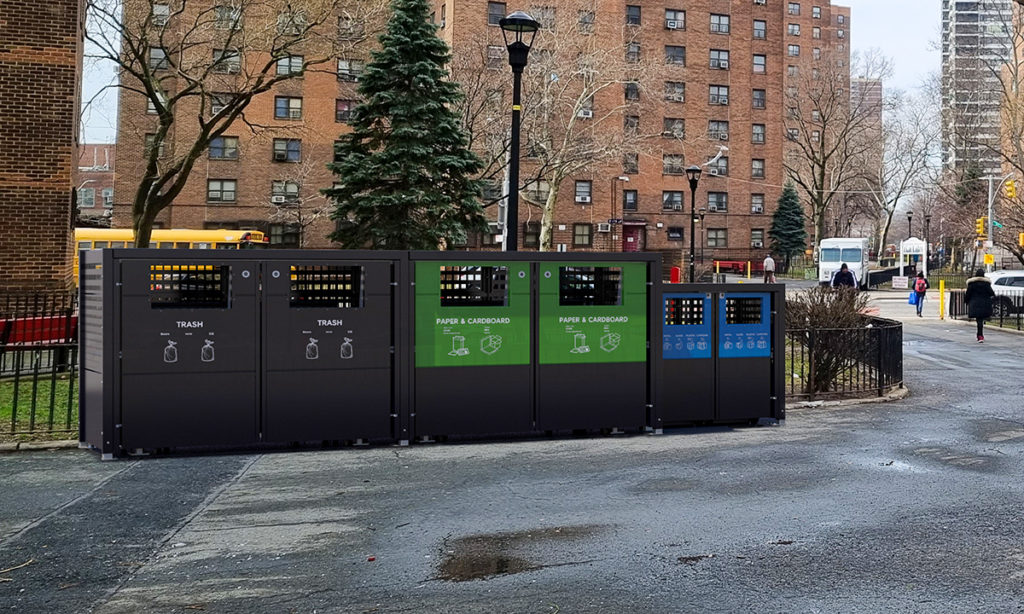
To further encourage recycling among non-participants, instructions should be supported with persuasive messaging. Enabling this through a positive and engaging tone, as opposed to guilt tactics, is typically a more successful approach, and can be achieved by focusing on factors such as community pride, cost savings, sustainability and employment opportunities.
Ultimately, educating the local community in order to raise awareness over collection practices should be considered vital. Integrating a communications strategy to inform the community of impending changes through social platforms or through more traditional means, such as a local newspaper, newsletter, or informing of changes at a community meeting, drives engagement from residents and encourages a sense of collaboration, helping to make them feel personally involved in the overall system.
Developing a successful recycling program that focuses on rural communities presents a distinct challenge. A number of rural areas have never had access to convenient and cost-effective recycling resources, and are often not afforded a comparative level of consideration in relation to urban communities when new legislation and recycling mandates are passed through government.
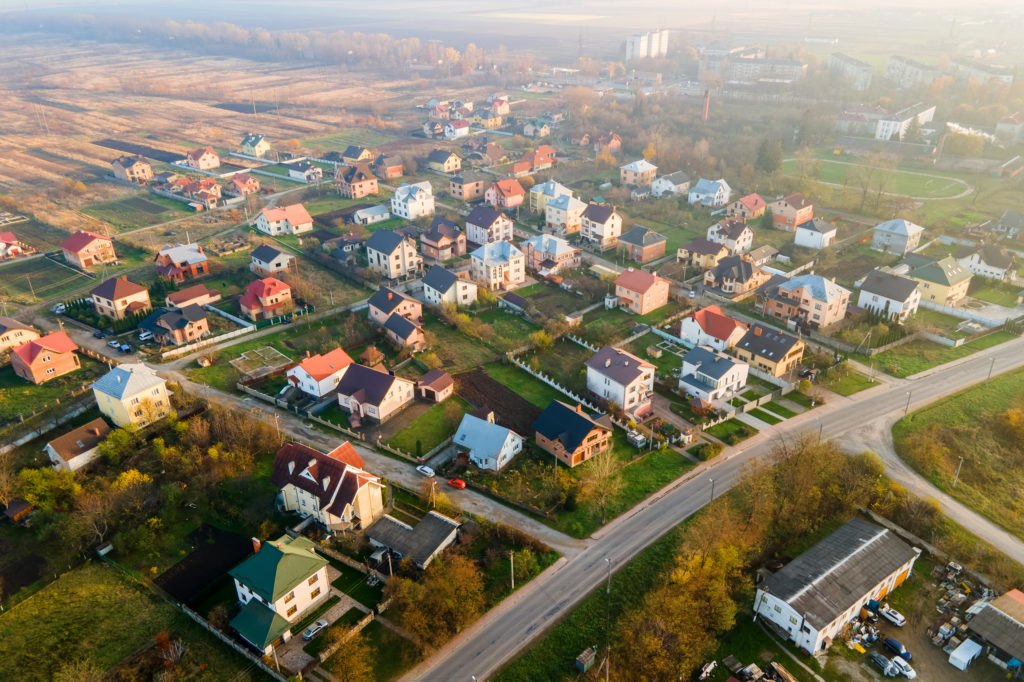
Cost effectiveness, population size, population density, limited volumes of recycling materials, and proximity to the nearest MRF are some significant factors that contribute to recycling access restrictions in rural communities. As a result, when steps are made to integrate new recycling schemes, such as a curbside collection service, it is typically a slow process and not efficient enough to sustain the cost of the collection vehicles and carts required.
However, it’s worth considering that rural communities commonly have a strong sense of solidarity among residents, and often benefit from a practical environment in which to develop alternative methods to recycling to ensure demand is met within their local community.
Rural recycling in local communities has also been successful in the past when it is embraced by a local government. By determining regional markets to establish accepted materials, local governments have helped to facilitate and establish effective recycling collection stations and drop-off centers as a paid service for the local community, generating revenue, increasing access and boosting recycling rates.
Drop-off collection stations are an ideal solution for high-density environments that typically encounter complications with curbside systems of recycling collection. If possible, processing and recovery facilities should be located as close to the collection stations as possible to reduce transport emissions and offer a more practical destination than landfill sites.
Ultimately, by following best practice guidelines, a recycling system can optimize logistics, encourage community participation and ultimately contribute towards the operational success of a collection station.
Beginning with just one single collection station, Staunton’s recyclables drop-off program has successfully expanded to include a recycling drop-off and collection center at Gypsy Hill Park. The city’s original curbside recycling program was drafted out in July 2021, and the changes originally faced backlash when residents argued it was a far less convenient solution for the local community. However, results have seen close to 70% of materials collected in comparison.
The unexpected success of the new collection center has led Staunton’s Public Works Department to reconsider their budget to manage the greater demand, with a major factor in the program’s success the acceptance of plastics as a recyclable material.
One of the most successful waste management programs of any community across the US, Pepperdine University is a private research institution with a main campus in Los Angeles County, California. Their local community holds an impressive recycling rate of 78% across their community, with only around 22% of their accumulated waste sent to landfill.
The university runs on-campus collection points, including the availability of e-waste disposal and a donation point for old computers, cell phones, and other forms of electronic waste. In addition, all organic waste is composted and reused as fertilizer.
Operating across Oregon, Rogue Disposal and Recycling has been operating since 1938, providing curbside trash, recycling and yard debris pickup services to 50,000 residential and commercial customers. Located in White City, the company also runs a paid Recycling Depot and Transfer Center where members of the community can drop-off a variety of common recyclables, including materials not accepted in their curbside recycling program.
In addition to a composting service, where old leaves, clippings and plant matter from the area are turned into home-grown compost and sold to the local community as landscaping material, the center runs an annual household hazardous waste drop-off event.
Created by Trex Company, Inc, NexTrex is a program that provides a recycling solution for plastic film packaging. Users involved in the program can drop off clean, dry, plastic bags and film at a substantial number of locations across the nation, run by participating partners and local communities. The program has successfully diverted thousands of pounds of waste from landfills, recycling the waste into eco-friendly outdoor products.
Part of the NexTrex program is the Trex Plastic Bag Recycling Challenge. Participants are challenged to collect or exceed 500 pounds of plastic in a 6-month period, with successful participants awarded an eco-friendly Trex bench, created from recycled plastic.
Terracycle is a private US-based recycling business with headquarters in Trenton, New Jersey, that has been operating for over 20 years. Terracycle’s mission is to eliminate the idea of waste, working with businesses, government entities, and communities globally to achieve solutions for landfill diversion, recycling, and the recovery and reuse of materials, including the development of hundreds of one-of-a-kind recycling solutions.
The company runs a community-based public drop-off point network, available throughout the nation. Largely operated by the local community, administrators choose a convenient, accessible location for the collection station, and select a free recycling program to participate in. The collected waste is then sent to TerraCycle via prepaid shipping labels where it is recycled.
For the United States, China’s recent ban on the import of contaminated US recyclables has led to rising costs for processing recyclables domestically. As a result, many regions and communities across the nation have been encouraged to consider and develop the way in which they approach recycling, with increased awareness around its significant role in creating zero-waste pathways.
Cities like Boston, Massachusetts, are in the early stages of their own waste management and recycling ambitions. Alongside an expanding curbside organics collection plan, the city is developing a comprehensive recycling plan to promote recycling in the city. Included in this are plans to implement a residential drop-off program for the convenient and safe recycling of e-waste.
New York City, meanwhile, recently made significant steps towards mandating recycling in the city, with the NYC Council passing the Zero Waste Act on June 8, 2023. The legislative package included developments for curbside organics collections and drop-off points for hard-to-recycle items.

It can also be useful to look to former strategies that helped recycling rates prosper in the past and utilize these as influence for future initiatives. The first Earth Day was held on April 22, 1970, with the environmental initiative first focused on increasing efforts in the US. It influenced the establishment of thousands of recycling drop-off centers and collection stations, attributing to increased environmental awareness throughout the nation.
By encouraging a circular approach to waste management, recycling collection stations provide local communities with crucial systems for reducing, reusing and recovering materials, actively reducing waste emissions to prosper environmental care, and ensuring materials can be kept in circulation for as long as possible. Ensuring efforts are made to make recycling collection stations more accessible for local communities, can therefore be regarded as essential.

